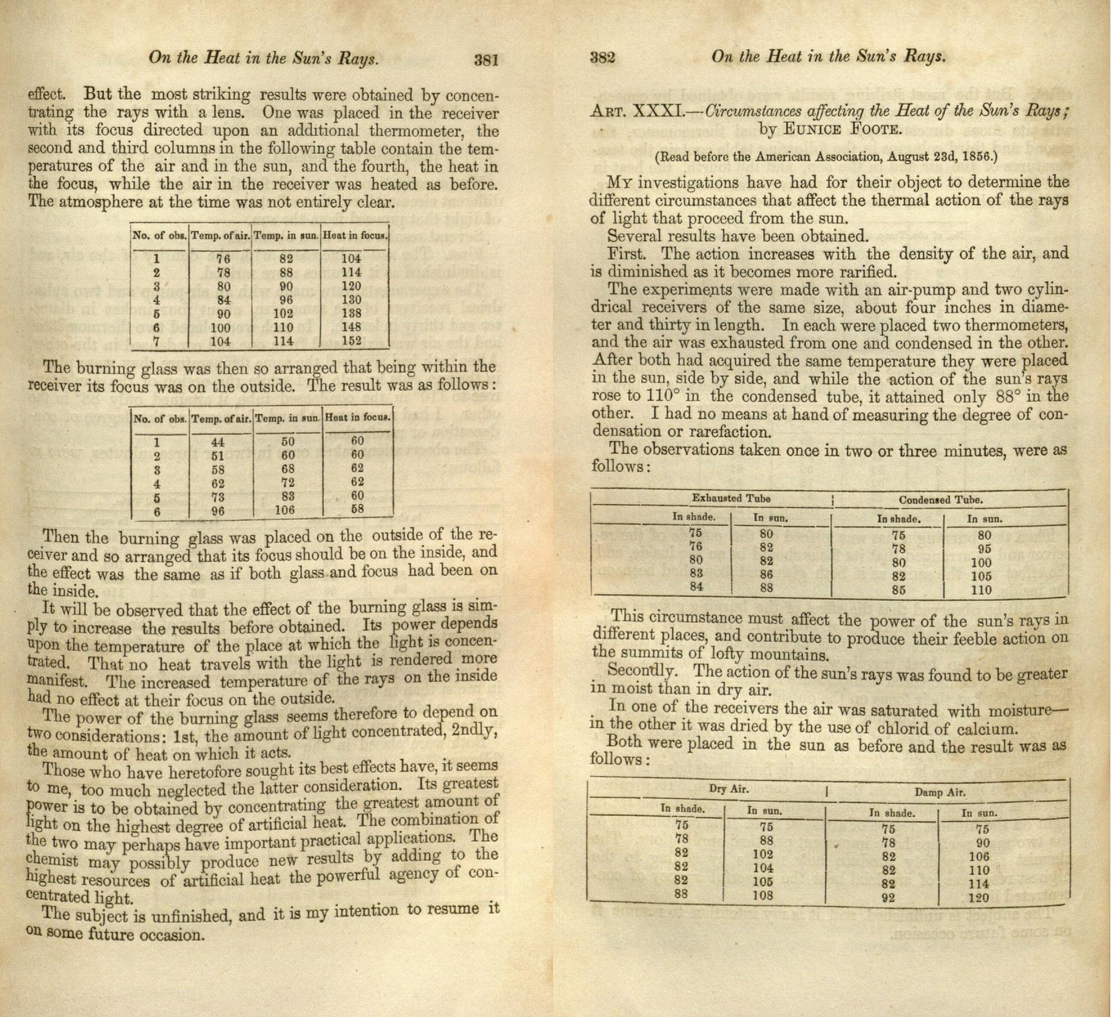Eunice Newton Foote, the pioneer who warned of global warming
Nowadays, with the exception of economic interests that take advantage of claims to the contrary, there is a general consensus that the cause of climate change is human activity. However, in the mid-19th century, just a few decades after humanity had to acknowledge the possibility of extinction, it was revealed that humans could suffer the consequences of a global catastrophe of their own making.
A passionless reception
On August 23, 1856, in Albany, New York, the physicist Joseph Henry presented at the 10th annual meeting of the American Association for the Advancement of Science (AAAS) the article Circumstances affecting the heat of the sun's rays, which did not appeared in the proceedings. His first appearance would occur partially in the oldest scientific journal in the country, the American Journal of Science and Arts, in November of that same year. The following year, he was quoted in David A. Wells's Annual of Scientific Discovery, where it was stated:
Prof. Henry then read a paper by Mrs. Eunice Foote, prefacing it with a few words, to the effect that science was of no country and of no sex. The sphere of woman embraces not only the beautiful and the useful, but the true.
In September 1856, Scientific American dedicated the article Scientific
Ladies-experiments with condensed gases to her, where it mentions that
Professor Caldwell of Louisville was able to test her knowledge of all
branches of physics.
At the 1856 meeting of the AAAS, her husband
Elisha Foote was able to present his own paper, On the heat in the sun's rays,
which was also not recorded in the proceedings, but allowed him to be elected as a
member. Thanks to this, On a new source of electrical excitation, Eunice's
second paper, did appear in the proceedings of the 1858 meeting, being presented
again by Joseph Henry. However, it is not known whether she continued with her
experiments. In fact, these are the only two known physics papers published by
an American woman before 1889. She never appeared on the AAAS membership list
and her husband disappears from the AAAS at the 15th meeting in 1866, after
the Civil War.
A pioneering experiment
Eunice Newton Foote (1819-1888) was an amateur scientist, but that did not
prevent her study from being the first to relate the presence of carbon
dioxide (CO2) to the increase in atmospheric temperature. To carry out her
experiment, she used two glass cylinders of the same size, with mercury
thermometers inside, which she would keep at the same temperature thanks to an
air pump that would extract or compress the air. He left the containers in the
sun, measuring the temperature they reached, performing the experiments with
humid air, sex air, hydrogen and carbon dioxide. The results showed that
humidity facilitated the heating of the air, but without reaching the levels
of carbon dioxide, which reached 52ºC. At the opposite extreme, hydrogen
hardly made any difference.
As the Scientific American article
mentioned, the experiment served as support for the theory of William
Partridge of Binghamton, who argued that the density of the air, and not the
angularity of the sun's rays, explained why it was warmer in the valleys than
on mountain tops. In addition, she was concerned with whether the composition
and concentration of different gases can affect the effect of the sun's rays
and whether these differences could be sorted out.
As we know the
article through David A. Wells, we do not know whether the relationship in the
text between carbon dioxide and atmospheric warming was Foote's conclusion or
Wells' speculation. Despite this, the experiment was simple and still left
some questions open, as it did not explain what caused these differences, nor
did it reveal that the cause of the greenhouse effect was not direct sunlight,
but light radiated from the surface. Nevertheless, it was ahead of John
Tyndall, who in 1859 confirmed the greenhouse effect by demonstrating that
coal gas and ethers absorbed infrared radiation, which then had more
difficulty than solar light in leaving the atmosphere, accumulating heat on
the earth's surface.
Source
- Sorenson, R. P. (2011). Eunice Foote’s pioneering research on CO2 and climate warming. Search and Discovery.
- Ortiz, J. D., & Jackson, R. (2020). Understanding Eunice Foote's 1856 experiments: heat absorption by atmospheric gases. Notes and Records





Comments
Post a Comment